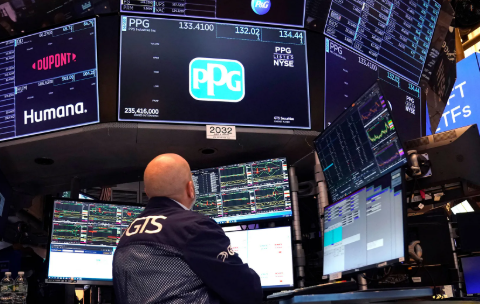How to Manage Risks Effectively in Trading
Effective risk management in trading is crucial for long-term success. It encompasses strategies such as setting stop-loss orders and diversifying portfolios to mitigate losses. Additionally, understanding market risks and maintaining a favorable risk-reward ratio are essential components. However, many traders overlook the importance of emotional control and regular trade reviews. This multifaceted approach raises questions about the best practices for implementing these strategies and the role they play in overall trading performance.
Understanding Market Risks
Market risks represent the potential for financial loss due to fluctuations in market variables, such as prices, interest rates, and foreign exchange rates. These risks are inherently linked to market volatility, which can arise from sudden economic changes or shifts in investor sentiment.
Economic indicators, including GDP growth rates, unemployment figures, and inflation data, play a crucial role in assessing market conditions. Traders must remain vigilant, as these indicators can signal impending volatility, influencing asset prices and investment decisions.
Understanding the interplay between market risks and these economic signals allows traders to navigate the complexities of financial markets. By analyzing this relationship, individuals can make informed decisions that align with their investment strategies, ultimately seeking to mitigate potential losses while pursuing financial freedom.
Read more: The Impact of Market News on Trading Decisions
The Importance of Risk Management
Risk management is a critical component in trading, as it serves to protect capital against potential losses.
By implementing effective risk management strategies, traders can enhance their decision-making process, leading to more informed and calculated choices in volatile markets.
Ultimately, a robust risk management framework is essential for fostering long-term success in trading endeavors.
Protecting Your Capital
Effective capital protection is fundamental in trading, serving as the cornerstone of a sustainable investment strategy. Traders must prioritize capital preservation strategies to ensure the longevity of their investment portfolios.
These strategies often include setting strict stop-loss orders and diversifying asset allocation to minimize exposure to market volatility. Additionally, implementing risk mitigation techniques, such as position sizing and utilizing options for hedging, can safeguard against significant losses.
Enhancing Decision-Making Process
Capital protection strategies set the stage for informed decision-making in trading.
Effective risk management enhances the decision-making process by establishing robust decision frameworks that guide traders through volatile market conditions. These frameworks help mitigate the influence of cognitive biases, such as overconfidence and loss aversion, which can cloud judgment.
By relying on systematic approaches, traders can objectively evaluate risks and rewards, leading to more rational choices. Furthermore, understanding one’s own psychological tendencies allows for adjustments that align strategies with market realities.
Ultimately, prioritizing risk management fosters a disciplined environment, empowering traders to navigate uncertainties with greater confidence and clarity, thereby enhancing their overall trading performance and potential for success.
Building Long-Term Success
While many traders focus on short-term gains, the foundation of long-term success lies in the consistent application of risk management principles. Effective risk management requires strategic planning, enabling traders to identify potential pitfalls and formulate responses.
By employing adaptive strategies, traders can adjust their approaches based on market conditions, mitigating losses while optimizing gains. This proactive stance fosters resilience and sustainability in trading practices.
Furthermore, a disciplined approach to risk management cultivates the freedom to explore new opportunities without the paralyzing fear of significant financial loss. Ultimately, integrating these concepts into a trading routine not only enhances decision-making but also solidifies a trader’s path toward enduring success in an unpredictable market landscape.
Setting Stop-Loss Orders
Setting stop-loss orders is a crucial strategy for traders aiming to mitigate potential losses in volatile markets. These orders serve as predefined exit points, allowing traders to limit their exposure to adverse price movements.
Various stop loss strategies exist, including fixed, trailing, and percentage-based orders, each catering to different trading styles and risk appetites. Fixed stop-loss orders provide a specific price point, while trailing stops adjust automatically with market fluctuations, securing profits as prices rise.
Traders must carefully select order types based on their individual risk tolerance and market conditions. By effectively implementing stop-loss orders, traders can maintain greater control over their investments, thus enhancing their ability to navigate the uncertainties inherent in trading.
Diversifying Your Portfolio
Risk management strategies, such as stop-loss orders, form a foundational aspect of trading, yet they are most effective when complemented by a well-diversified portfolio.
Diversification minimizes risk through asset allocation across various asset classes, such as stocks, bonds, and commodities. This approach allows traders to mitigate potential losses, as different assets often respond differently to market conditions.
By assessing their risk tolerance, traders can determine the optimal mix of assets that aligns with their financial goals and market outlook. A well-structured portfolio not only enhances the potential for returns but also provides a buffer against market volatility.
Ultimately, effective diversification fosters a resilient trading strategy that empowers traders to navigate uncertainties while pursuing financial freedom.
Position Sizing Strategies
Position sizing strategies play a critical role in effective risk management, as they determine the amount of capital allocated to each trade based on various factors, including account size, risk tolerance, and market conditions.
Traders often set position limits to avoid excessive exposure to any single investment, thereby safeguarding their capital. By calculating the appropriate position size, traders can align their trades with their risk tolerance, ensuring that potential losses remain manageable.
This disciplined approach fosters a balanced portfolio, allowing for both growth opportunities and protection against adverse market movements. Ultimately, effective position sizing empowers traders to navigate the complexities of the market while maintaining a clear perspective on risk, enabling them to pursue their financial goals with greater freedom and confidence.
Utilizing Risk-Reward Ratios
Utilizing risk-reward ratios is essential for traders aiming to optimize their decision-making processes.
Understanding the fundamental principles of risk-reward ratios allows for the calculation of optimal ratios that align with individual trading strategies.
This analytical approach can significantly enhance the ability to assess potential trade outcomes against associated risks.
Understanding Risk-Reward Basics
Understanding the dynamics of risk-reward ratios is essential for effective trading strategies. A risk-reward ratio quantifies the relationship between potential losses and gains, guiding traders in their risk assessment.
By evaluating reward expectations against the inherent risks, traders can identify opportunities that align with their risk tolerance. A favorable ratio, typically greater than one, suggests that the potential profit outweighs the risk taken, thereby enhancing decision-making processes.
Conversely, unfavorable ratios can signal a need for reevaluation of trading positions. This analytical approach allows traders to maintain control over their financial decisions, fostering a sense of freedom in navigating the market’s complexities while adhering to personal risk management principles.
Ultimately, understanding these basics empowers traders to make informed choices.
Calculating Optimal Ratios
When traders seek to optimize their strategies, calculating risk-reward ratios becomes a critical analytical tool. This technique involves a systematic risk calculation where potential gains are weighed against potential losses.
A favorable risk-reward ratio, typically 2:1 or 3:1, indicates that the expected profit is significantly greater than the probable loss. Ratio analysis assists traders in determining whether a trade aligns with their overall risk tolerance and financial objectives.
Regularly Reviewing Your Trades
Regularly reviewing trades is a critical component of effective risk management in trading. This process involves conducting thorough trade analysis to evaluate decisions made and outcomes achieved.
By consistently assessing performance metrics, traders can identify patterns, strengths, and weaknesses in their strategies. This objective scrutiny allows for adjustments that enhance overall trading performance and minimize potential risks.
Regular reviews facilitate a deeper understanding of market dynamics and individual trading behaviors, fostering a disciplined approach. Furthermore, maintaining a systematic review schedule empowers traders to adapt to changing market conditions, ensuring they remain agile and informed.
In essence, regular trade reviews are not merely beneficial but essential for those seeking to manage risks and achieve sustained trading success.
Keeping Emotions in Check
Maintaining emotional control is crucial for traders, as impulsive decisions often lead to detrimental outcomes. Effective emotion regulation is essential in trading psychology, where emotional responses can cloud judgment and distort risk assessment.
Traders must recognize their emotional triggers and implement strategies to manage them. Techniques such as mindfulness, journaling, and setting predefined trading limits can help maintain composure during volatile market conditions.
By fostering an objective mindset, traders can better evaluate market data without succumbing to fear or greed. Cultivating emotional resilience not only enhances decision-making but also promotes a sense of freedom, allowing traders to operate with confidence and clarity.
Ultimately, controlling emotions is a fundamental aspect of successful trading and risk management.
Staying Informed About Market Trends
Staying informed about market trends is essential for traders seeking to navigate the complexities of financial markets effectively. By engaging in thorough market analysis, traders can identify patterns and make informed decisions, thereby enhancing their potential for success.
Regularly reviewing news updates is crucial, as economic indicators, geopolitical events, and market sentiment can significantly influence asset prices. Utilizing multiple sources for information, such as financial news outlets and analytical reports, enables traders to obtain a holistic view of the market landscape.
Furthermore, adapting to real-time changes ensures that traders remain agile, ready to adjust their strategies in response to evolving conditions. Ultimately, knowledge of market trends empowers traders to manage risks and seize opportunities with greater confidence.
Conclusion
In conclusion, effective risk management is crucial for trading success, with studies showing that approximately 70% of traders fail due to inadequate risk strategies. By implementing techniques such as stop-loss orders, portfolio diversification, and regular trade reviews, traders can significantly enhance their chances of long-term profitability. Coupled with disciplined emotional control and an awareness of market trends, these practices create a robust framework that can mitigate risks and optimize trading outcomes.





